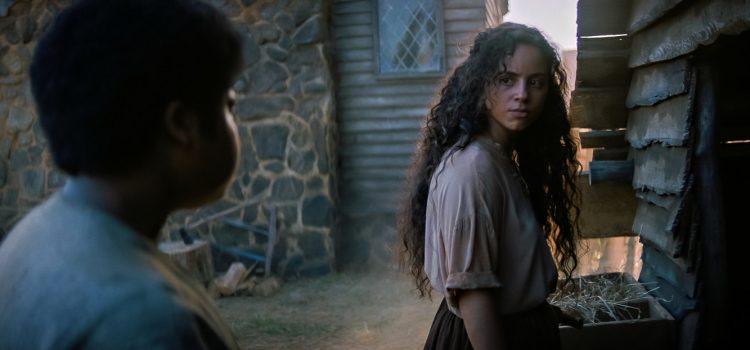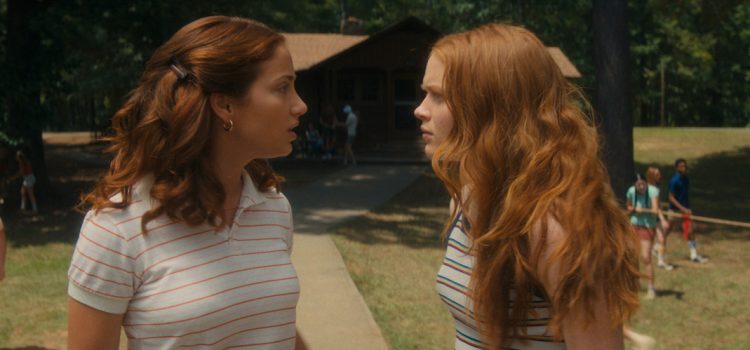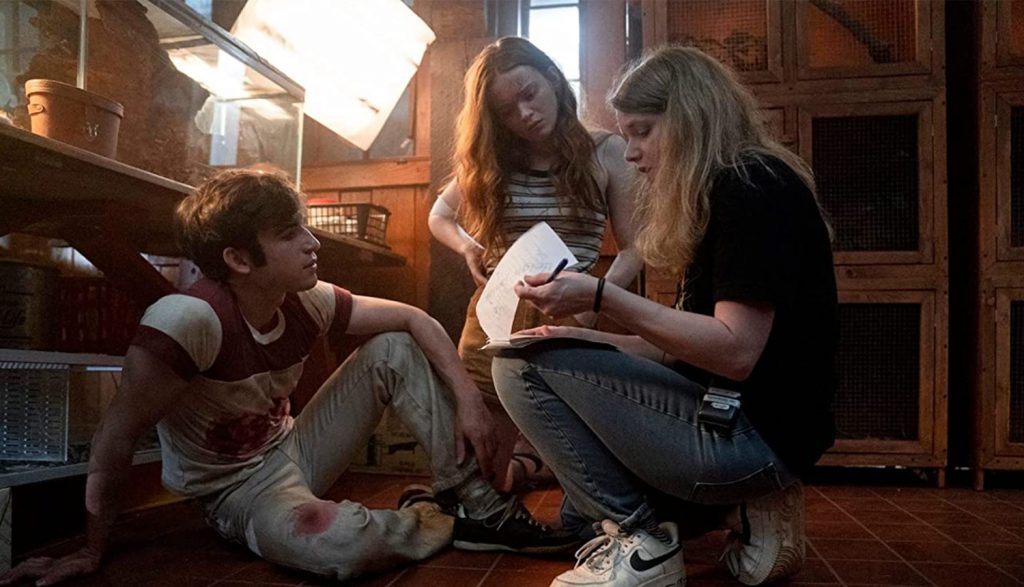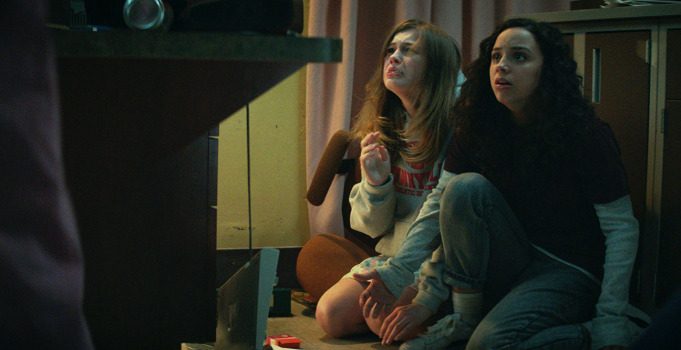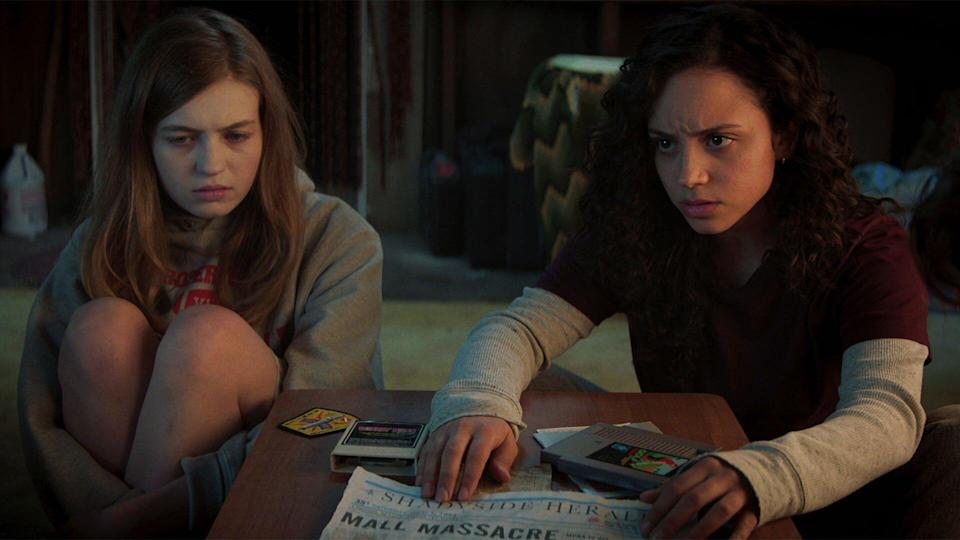By Alex McPherson
Well, dear readers, the time has sadly come for the conclusion of director Leigh Janiak’s “Fear Street” series. Fortunately, “Part 3:1666” ends the trilogy in an emotionally fulfilling, adrenaline-fueled fashion.
Without going too far into spoiler territory, “1666” sees Deena (a wonderful-as-ever Kiana Madeira) being transported back in time in Sarah Fier’s body, originally played by Elizabeth Scopel, to witness the origins of the curse that’s haunted Shadysiders ever since. The film features a new cast of characters, but most of them are portrayed by the same actors from former installments, some of whom adopt similar dynamics. Most notably, this includes Olivia Scott Welch, who plays Sarah’s love interest in “1666,” as well as Sam, Deena’s lover, in 1994. Ashley Zukerman, who embodies Sheriff Goode in 1994, also makes a meaningful return as Sarah’s friend Solomon, who holds his own secrets.
Although there are opportunities for hard-working Sarah to relax, her story is relentlessly grim — containing themes of superstition, intolerance, and hatred of the Other that have remained prevalent throughout human history. As Sarah finds herself embroiled in a web of deceit, misogyny, and fateful events that have long-lasting repercussions on Shadyside’s future, there’s little hope for escape. Once her tragic ordeal wraps up, Janiak sends viewers back to 1994 once again, as Deena, Josh (Benjamin Flores Jr.), C. Berman (Gillian Jacobs), and janitor Martin (Darrell Britt-Gibson) attempt to rescue Sam from demonic possession and use their newfound knowledge to finally end the curse.
Tonal inconsistency notwithstanding, “1666” is a disturbing, intelligent, and rewarding finale that successfully ties up loose ends while enhancing what’s come before. Janiak delivers an experience with more layers than both “1994” and “1978,” capping off the overarching narrative with panache.
“Fear Street” has progressively grown creepier with each entry, and “1666” is the eeriest of the bunch. Indeed, by bringing viewers back into such an antiquated period, the film is able to distill its horror into a more potent, disquieting brew. Most plot developments even feel scarily plausible on some level, drawing comparisons to the Salem Witch Trials. Along with convincing set design and a more immersive atmosphere than its predecessors, “1666” is able to conjure dread-inducing moments aplenty. Janiak’s serious-minded approach, at least for the first half, underscores the monstrousnesses of Sarah’s bigoted townsfolk just as much as the actual supernatural forces at play.
It’s initially jarring to be sent so far back in time and see actors we’ve grown attached to inhabiting different people, with questionable accents, but Janiak uses this dissonance for subversive effect. Throughout the films, for instance, the Shadyside curse inspires a sense of fatalism in many residents that they’re stuck in an endless cycle of death and alienation from the outside world. Seeing recognizable faces where it all began heightens viewers’ desire to see Deena and friends right the wrongs of the past in the present, attempting to break the pattern once and for all.
Additionally, forbidden love rests at the heart of Sarah’s flashback, and “1666” is able to use that connection to forge an attachment with her from the get-go, utilizing viewers’ investment in Deena and Sam’s relationship to heighten poignancy and encourage reflection on biases that carry over across timelines. Sarah remains an intriguing character on her own, and her plight is easy to become invested in as she gradually begins to doubt herself yet retains bravery in the face of humanity’s worst instincts.
With an ever-mounting sense of hopelessness, Sarah’s tale isn’t easy viewing, replacing subtlety with visceral impact, but it leaves a chilling aftertaste. Then, however, “1666” takes a hard left turn back into the self-aware, occasionally cheesy tone of “1994” to wrap things up. The tonal shift is certainly jarring for a bit, but once viewers become acclimated, there’s pleasure to be had in watching the heroes make their triumphant last stand — not just for themselves, but for the future of Shadyside itself.
Some elements, like the major plot twist, feel undercooked, and the second half resembles the largely scare-less final act of “1994,” yet it’s still oh-so-fun to see what happens to these courageous characters. For all the haunted-house-roller-coaster pacing, the revelation effectively adds a new layer to the previous films, encouraging viewers to rewatch them and examine how all the pieces fit together.
Whether or not viewers can overlook the semi-fractured feel of “1666,” there’s little denying that Janiak and company have created an impressive whole, one that has matured over its duration to form an ambitious, albeit far-fetched, allegory targeting resonant societal truths. There’s definitely imperfections to be found in each film, but Janiak’s R. L. Stine-inspired project reaches its stride in “1666,” leaving the door open for future adventures in Shadyside.
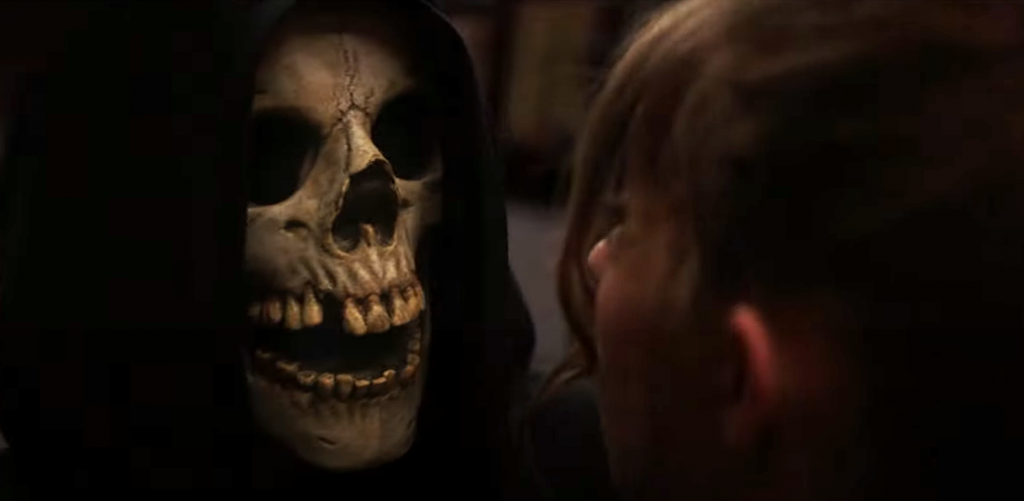
“Fear Street Part 3: 1666” is the last film in a 2021 trilogy now streaming on Netflix, adapted from R.L. Stine’s book series. Directed by Leigh Janiak, it stars Kiana Madeira, Benjamin Flores Jr., Gillian Jacobs and Ashley Zukerman. Rated R for strong violence and gore, language, some sexuality and brief drug use, it runs 1 hour, 54 minutes. Alex’s Grade: A-.

Lynn (Zipfel) Venhaus has had a continuous byline in St. Louis metro region publications since 1978. She writes features and news for Belleville News-Democrat and contributes to St. Louis magazine and other publications.
She is a Rotten Tomatoes-approved film critic, currently reviews films for Webster-Kirkwood Times and KTRS Radio, covers entertainment for PopLifeSTL.com and co-hosts podcast PopLifeSTL.com…Presents.
She is a member of Critics Choice Association, where she serves on the women’s and marketing committees; Alliance of Women Film Journalists; and on the board of the St. Louis Film Critics Association. She is a founding and board member of the St. Louis Theater Circle.
She is retired from teaching journalism/media as an adjunct college instructor.

